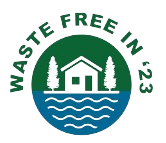Diaper Recycling: A Sustainable Solution for a Growing Problem

Introduction
Diapers create significant waste. Nairobi, Kenya, leads in recycling them into resources for road repair and agriculture. Their community-based system reduces transportation needs, minimizing environmental impact. (Nairobi’s Waste Management Authority, 2023)
Composting regular disposable diapers is not recommended. While the absorbent material might seem compostable, it can harbor harmful bacteria. This article focuses on a more effective and safer method.
Thermal Diaper Recycling: A Step-by-Step Guide
This proven method breaks down diapers into usable components. Here’s a breakdown of the process:
Collection: Used diapers are collected, and workers must wear protective gear (PPE) for safety.
Disinfection: Diapers undergo sterilization using dry heat. According to the CDC, a temperature of 150°C (300°F) for 2 hours is effective in killing all bacteria and pathogens without damaging the plastic components. The heat can be generated using solar energy or excess heat from biochar production.
Disassembly:
- Feces: The fecal material is separated and subjected to torrefaction, a mild form of pyrolysis, to create safe fertilizer.
- Cellulose: Any cellulose present can be transformed into biochar, which serves as a valuable soil amendment or used for other applications.
- Plastics: The front and back plastic layers can be repurposed as binders for tarmac or road repair.
SAP (Super Absorbent Polymer) Processing: SAP crystals are collected, dried, and sterilized at 150°C. These can then be sold for agricultural applications, as sodium polyacrylate has been shown to improve soil water retention, making it a valuable resource for farming.
Recycling Diaper Materials: Beyond Disposal
The components of a disposable diaper, especially the Super Absorbent Polymer (SAP) crystals, have significant potential for reuse:
- Feces to Fertilizer: Through the process of torrefaction, the fecal matter is transformed into fertilizer, providing a sustainable agricultural resource.
- SAP for Farms: The collected SAP crystals are disinfected and sold to farms to help improve soil moisture retention.
- Plastics for Road Repair: The outer and inner plastic layers can be melted and used as a binder to repair roads, reducing the need for new materials.
This method presents a sustainable alternative to traditional diaper disposal, turning waste into valuable resources while minimizing environmental impact.
Now, individuals in relevant groups such as diaper recycling and waste management can share this process across various chats and forums, sparking discussions on its viability and encouraging broader adoption of these techniques.
